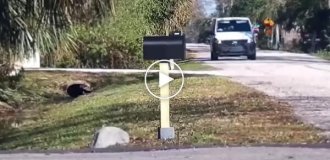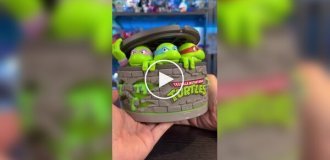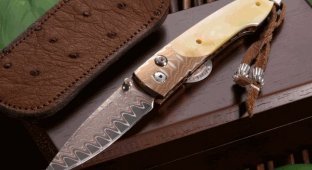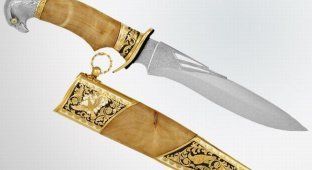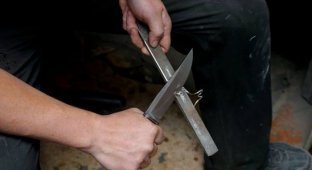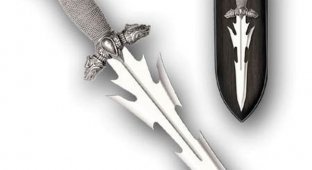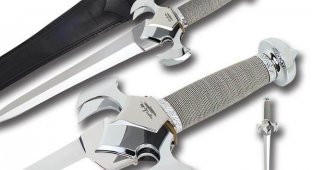You can't turn around in the trenches with a rifle.
In addition to clubs and spades/hatchets, knives were also used.

At first, the soldiers armed themselves with bayonets taken from rifles, homemade knives and daggers, and brass knuckles.
A prominent place in this arsenal was also occupied by brass knuckles, to which the inexhaustible ingenuity of man in inventing weapons for the extermination of his fellow man gave the most terrible and varied forms.
Getting to the topic, the first sample that caught my eye turned out to be a fairly high-quality replica of a trench knife.


So why is this a remark, you ask me, but here’s why:
find 10 differences
In December 1915, Georges Dubois, the quartermaster of Paris, proposed to the War Ministry his own version of a combat knife: a narrow stiletto-shaped triangular blade, a wooden handle covered with a protective arch with pyramidal protrusions that turn it into brass knuckles (from the French castete - “breaking the head”). The idea itself was good, but France already had a sample, the production of which was established, and the proposal was rejected. The US military command became interested in this knife and recommended it for arming the Marine Corps. The brass knuckle stiletto called the “trench knife M 1917” was adopted for service. In the first models, six pyramidal spikes were stamped around the perimeter of the guard. The nut securing the handle also had a pyramidal shape.

In the same 1917, a second model appeared, identical to the first, except that the spikes of the brass knuckles were now stamped immediately with the development of the bow from a sheet of metal, and then simply bent outward.
But the narrow, stiletto-shaped blade could only be used to stab, which reduced the combat effectiveness of the knife. Therefore, engineer McNary developed a design with a double-edged dagger blade 17 cm long. The cast brass handle was equipped with a hilt with a wide guard. He patented his design in England in 1918, which is why it became known as M 1918. In the USA, this dagger was produced by L.F&C (Landers, Frary & Clark), H.D&S (Henry Disson & Sons) and O.C.L" (Oncida Community Ltd). The handle of the dagger was narrower; the hole for the finger reached almost to its middle. This differed from some of the knives manufactured by order of the US government in France.

1. The second model of the American “trench knife M 1917”
2. McNary knife (blade length 17 cm)
3. a - “French model”, b – drawing from the patent
4. English trench knife, blade length 10-14 cm
The “French” model had a cast nickel handle, and the protrusions of the brass knuckles were pointed slightly less than the “American” one. The holes for the fingers were located on the outside of the handle. The “U.S.” index was stamped on the handle. 1918". In the area of the heel of the blade, taken from the French “Venger” knife, a stamp was placed depicting a lying lion and the inscription “AU LION”.
Plus, of course, I can’t ignore these old homemade products:

This frog splitter was converted from a German cavalry saber.

This French brass knuckle stiletto was clearly homemade and was most likely made from a barbed wire crutch.

This is a pre-war British Clements knife

And this is the combat knife of the same Clements from the First World War.

"M 1917", first model. Length 356 mm, width of triangular blade - 14 mm

And this is the weapon of the maniac from the movie “Cobra” with Sylvester “The Italian Stallion” Stallone.
Based on all of the above, I will conclude that initially, of course, such a hybrid as a knife-brass knuckles was initially, of course, a weapon of the underworld, but it owes its mass popularity to the military, who adopted it because of its increased functionality and versatility in confined spaces.


